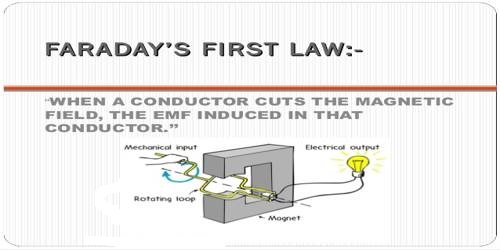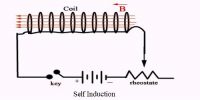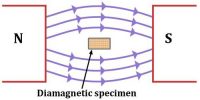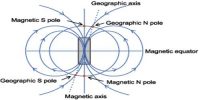Faraday’s First Law of Electro-magnetic Induction
In 1831 famous scientist Faraday gave two laws of electro-magnetic induction. According to his name, these laws are called Faraday’s laws of electro-magnetic induction. An important industrial application of Faraday’s law is electroplating, where a material is coated with a thin metallic layer to prevent corrosion or abrasion.
First law: Whenever there is a change of a number of magnetic lines of induction or magnetic flux in a closed loop, then an electromotive force is induced in that loop.
Explanation: Faraday’s first law states that the amount of current passed through an electrode is directly proportional to the amount of material liberated from it. If there is a relative motion between a bar magnet or a current-carrying coil and a closed secondary coil or a current-carrying coil is kept inside a secondary coil and the current is allowed to change, then a number of magnetic field lines associated with the secondary coil changes. As a result, induced electromotive force or current is generated in the secondary coil. If the numbers of field lines do not change with time, then no induced current is generated in the coil.














